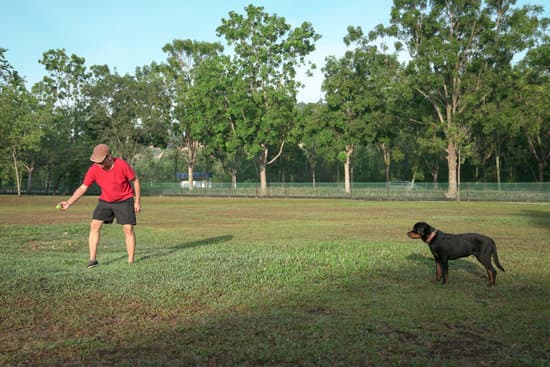Training a kitten and dogs is not only possible but can lead to a harmonious household. Starting at a young age, training both animals is important for their development and integration into the family. Understanding the nuances of training different animals is essential for a successful training process.
Training a kitten and a dog is not only feasible but also beneficial for creating a peaceful environment at home. Each animal has its unique needs, behaviors, and methods that work best for them. When it comes to kittens, basic training techniques include using the litter box, teaching them to come when called, and implementing positive reinforcement methods.
Similarly, for dogs, basic obedience commands, potty training tips for puppies, and leash walking are important aspects of their training. As both animals grow and develop, advanced techniques like teaching tricks and agility exercises for kittens, and advanced obedience commands as well as agility training for dogs become essential.
It’s also important to address any behavioral issues in dogs that may arise during their training process. Additionally, we will explore how to train both animals together in order to create a harmonious environment for everyone in the household.
Understanding the Differences in Training Needs
When it comes to training a kitten and a dog, it’s essential to understand that these two animals have different training needs. Both kittens and dogs can be trained, but their methods, behaviors, and needs are often distinct. Kittens are generally more independent and require a different approach to training compared to dogs, which are known for their pack mentality and loyalty.
One key difference in training kittens and dogs is the use of litter boxes. Kittens need to be trained to use a litter box from an early age, while dogs require outdoor potty training. Additionally, cats are typically more solitary animals and tend to respond better to positive reinforcement techniques, while dogs thrive on praise, consistency, and clear boundaries.
Recognizing these differences is crucial when embarking on training both a kitten and a dog. By understanding each animal’s unique needs and behavioral traits, pet owners can tailor their training methods accordingly.
Teaching a kitten to come when called is an essential skill that can improve the bond between pet and owner. Using treats or toys as positive reinforcement can be an effective way to train kittens to respond when called. It’s also important for owners not to engage in rough play with their kittens as this could encourage biting or scratching behaviors. With patience and consistency, pet owners can successfully train their kittens using positive reinforcement methods.
| Differences in Training Needs | Training Methods |
|---|---|
| Kittens need litter box training | Cats respond well to positive reinforcement techniques |
| Dogs require outdoor potty training | Dogs thrive on praise, consistency, and clear boundaries |
Basic Training Techniques for Kittens
Training a kitten can be a rewarding experience that can also have benefits for the overall harmony of your household. Starting training at a young age is crucial for both kittens and dogs, as it lays the foundation for good behavior and creates a harmonious environment within the home. When it comes to basic training techniques for kittens, there are several key areas to focus on.
Basic Training Techniques for Kittens
- Teaching a kitten to use a litter box: One of the most important aspects of training a kitten is teaching them to use a litter box. This can be achieved through positive reinforcement and providing access to a clean litter box at all times.
- Training a kitten to come when called: Teaching your kitten to come when called is not only practical, but can also be beneficial in emergency situations. Using treats and praise can help reinforce this behavior.
- Positive reinforcement methods for kittens: Positive reinforcement, such as treats or affection, can effectively encourage good behavior in kittens. Whether it’s using the litter box or coming when called, positive reinforcement is essential for successful training.
By implementing these basic training techniques for kittens, pet owners can successfully train their feline friends to become well-behaved and happy members of the household As with any type of animal training, consistency and patience are key factors in achieving successful results.
Basic Training Techniques for Dogs
When it comes to training dogs, basic obedience commands are essential for a well-behaved canine companion. Here are some fundamental techniques and tips for successfully training your dog:
- Potty training tips: Establishing a consistent routine for taking your puppy outside to use the bathroom is crucial. Always reward your dog with praise or treats when they exhibit the desired behavior.
- Basic obedience commands: Teaching your dog commands such as sit, stay, and come can be accomplished through positive reinforcement techniques. Consistency and patience are key in reinforcing these commands.
- Teaching a dog to walk on a leash without pulling: Using positive reinforcement and redirecting techniques can help train your dog to walk politely on a leash. Regular practice and rewarding good behavior with treats or praise can lead to success in leash training.
Remember that each dog is unique, so it’s important to observe your pet’s behavior and adjust your training methods accordingly. Additionally, seek professional help if you encounter difficulties in training or addressing behavioral issues in your dog.
By investing time and effort into basic training techniques for dogs, you can establish a strong foundation for building advanced skills and addressing any behavioral challenges that may arise later on in your pet’s life. With patience and consistency, you can train a kitten and dogs effectively, leading to a happy and harmonious household.
Advanced Training for Kittens
Training a kitten can be just as rewarding and effective as training a dog. While kittens may have different behaviors and needs than dogs, they are still highly trainable animals. When it comes to advanced training for kittens, it’s important to keep in mind their natural instincts and tendencies. Teaching a kitten tricks and agility exercises can provide mental stimulation and help them stay active.
One key aspect of advanced training for kittens is navigating potential challenges like scratching and biting. These are natural behaviors for kittens, but with the right training techniques, they can learn to redirect these behaviors in more appropriate ways. Using positive reinforcement methods can be especially effective in addressing these challenges while also fostering a strong bond between you and your kitten.
Just like with dogs, advanced training for kittens requires patience and consistency. It’s important to set realistic expectations and understand that every kitten will progress at their own pace. By providing consistent training, positive reinforcement, and plenty of love and attention, you
| Training Techniques | Description |
|---|---|
| Teaching tricks and agility exercises | Providing mental stimulation for the kitten |
| Navigating scratching and biting challenges | Using positive reinforcement to redirect these natural behaviors |
Advanced Training for Dogs
Advanced Obedience Commands for Dogs
Once your dog has mastered the basic obedience commands, you can start introducing more advanced commands such as “stay,” “leave it,” and “heel.” Advanced obedience training
Agility Training for Dogs
Agility training is a great way to keep your dog physically and mentally active while strengthening the bond between you and your pet. This type of training involves navigating through a series of obstacles such as tunnels, weave poles, and jumps. It
Addressing Behavioral Issues in Dogs
As dogs mature, they may exhibit certain behavioral issues that require attention. Whether it’s excessive barking, destructive chewing, or separation anxiety, it’s important to address these issues through proper training techniques. Using positive reinforcement methods and consistency
If you’re struggling with a specific behavioral issue, consulting with a professional dog trainer or behaviorist
Training Together
Create a Harmonious Environment
in the household where both animals understand their roles and boundaries. It’s important to establish a positive relationship between the kitten and the dog from the beginning to ensure that they are comfortable around each other during training sessions.
Tips for Training a Kitten and a Dog Together
include starting with basic obedience commands that are suitable for both animals. For example, teaching them to sit, stay, or come when called can be practiced simultaneously. Another important tip is to provide separate training sessions for each animal initially before gradually introducing joint sessions.
Involves Setting Clear Boundaries
while also allowing them to interact in a supervised manner. This helps them understand what behavior is expected during training and ensures their safety at all times. Additionally, providing positive reinforcement such as treats, praise, and playtime encourages good behavior in both the kitten and the dog.
Foster Camaraderie
between the two animals and promote mutual respect within the household. With patience, consistency, and understanding of each animal’s unique needs, it is possible to create a well-balanced training routine that benefits both the kitten and the dog.
Conclusion
In conclusion, training both kittens and dogs is not only possible, but also highly beneficial for creating a harmonious household. Starting training at a young age is crucial for both kittens and puppies, as it sets the foundation for their behavior and habits as they grow older. By understanding the differences in training needs between these two animals, pet owners can tailor their approach to effectively train their pets.
Basic training techniques for kittens include teaching them to use a litter box, come when called, and using positive reinforcement methods. On the other hand, basic training techniques for dogs involve obedience commands, potty training, and leash walking. As they progress in their training, advanced techniques can be introduced such as teaching tricks and agility exercises for kittens, while advanced obedience commands and agility training are beneficial for dogs.
It’s important to note that training both kittens and dogs together requires patience and consistency. Creating a harmonious environment for both animals during training is key to success. Ultimately, a well-trained kitten and dog not only make for better companions but also contribute to a happy home life. By investing time in their training, pet owners can enjoy the rewards of a well-behaved kitten and dog in their household.

Welcome to the blog! I am a professional dog trainer and have been working with dogs for many years. In this blog, I will be discussing various topics related to dog training, including tips, tricks, and advice. I hope you find this information helpful and informative. Thanks for reading!





